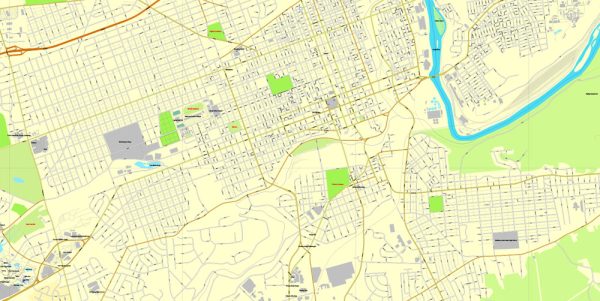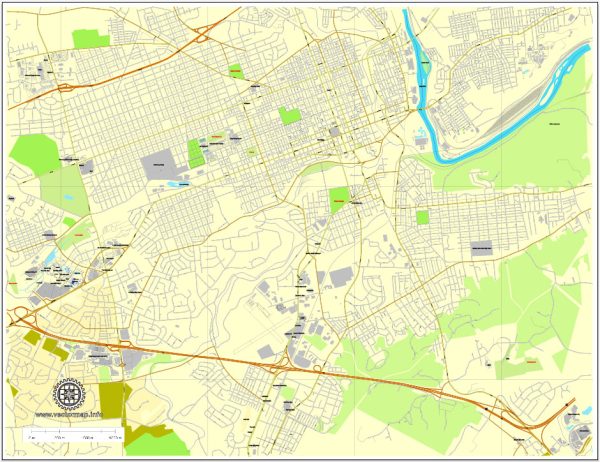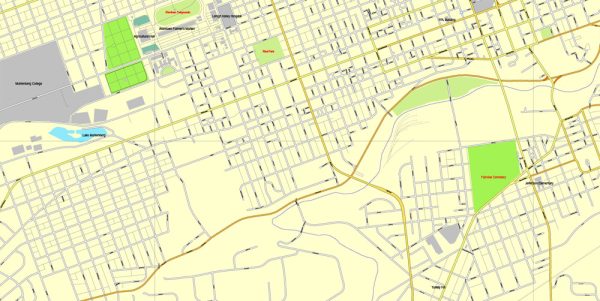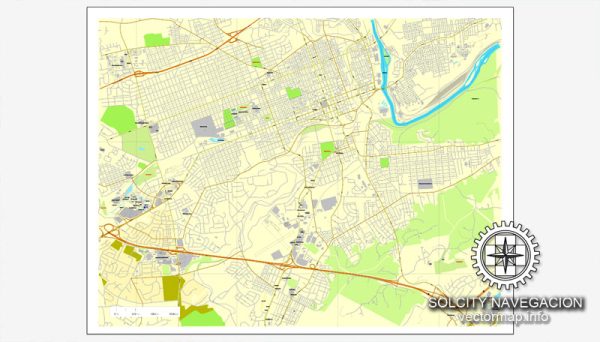Allentown, Pennsylvania is located in the northeastern United States and is part of the larger Lehigh Valley region. It experiences a temperate continental climate, characterized by four distinct seasons. Here’s an ecological description of Allentown:
- Climate: Allentown experiences a temperate climate with cold winters and warm summers. The area typically receives a moderate amount of precipitation throughout the year. Summers are warm and humid, with temperatures averaging in the 70s and 80s Fahrenheit (around 25-32°C). Winters are cold with temperatures often dropping below freezing, and snowfall is common.
- Vegetation: Allentown’s natural vegetation consists of mixed hardwood forests, including species like oak, hickory, maple, and beech trees. The Lehigh River and its tributaries, which run through the region, support riparian ecosystems with a variety of aquatic plants.
- Wildlife: Allentown and the surrounding areas are home to diverse wildlife. Common mammals in the region include white-tailed deer, raccoons, squirrels, and various rodent species. Birdwatchers can spot a wide range of avian species, including cardinals, blue jays, and migratory birds. The Lehigh River also supports aquatic life, such as various fish species.
- Urban Development: Allentown is a city with a mix of urban and suburban development. While there are residential areas, commercial districts, and industrial zones, the city has made efforts to incorporate green spaces, parks, and tree-lined streets. The Lehigh Valley region has seen an increase in urbanization, but conservation efforts have been implemented to protect the natural environment.
- Parks and Green Spaces: Allentown has several parks and green spaces, including Cedar Beach Park, Lehigh Parkway, and Trexler Memorial Park. These areas provide recreational opportunities for residents and contribute to the city’s ecological diversity.
- Environmental Concerns: Like many urban areas, Allentown faces environmental challenges such as air and water pollution, habitat fragmentation, and the need for sustainable land use planning. Local organizations and authorities work to address these issues through conservation efforts, recycling programs, and sustainable urban development practices.
- Nearby Natural Attractions: The Lehigh Valley region offers access to the Pocono Mountains and the Appalachian Trail, providing opportunities for outdoor activities such as hiking, camping, and skiing in the winter months.
Allentown, Pennsylvania, and its surrounding areas offer a blend of urban development and natural landscapes, making it a region with diverse ecological features and opportunities for residents and visitors to connect with the natural world.





 Author: Kirill Shrayber, Ph.D.
Author: Kirill Shrayber, Ph.D.